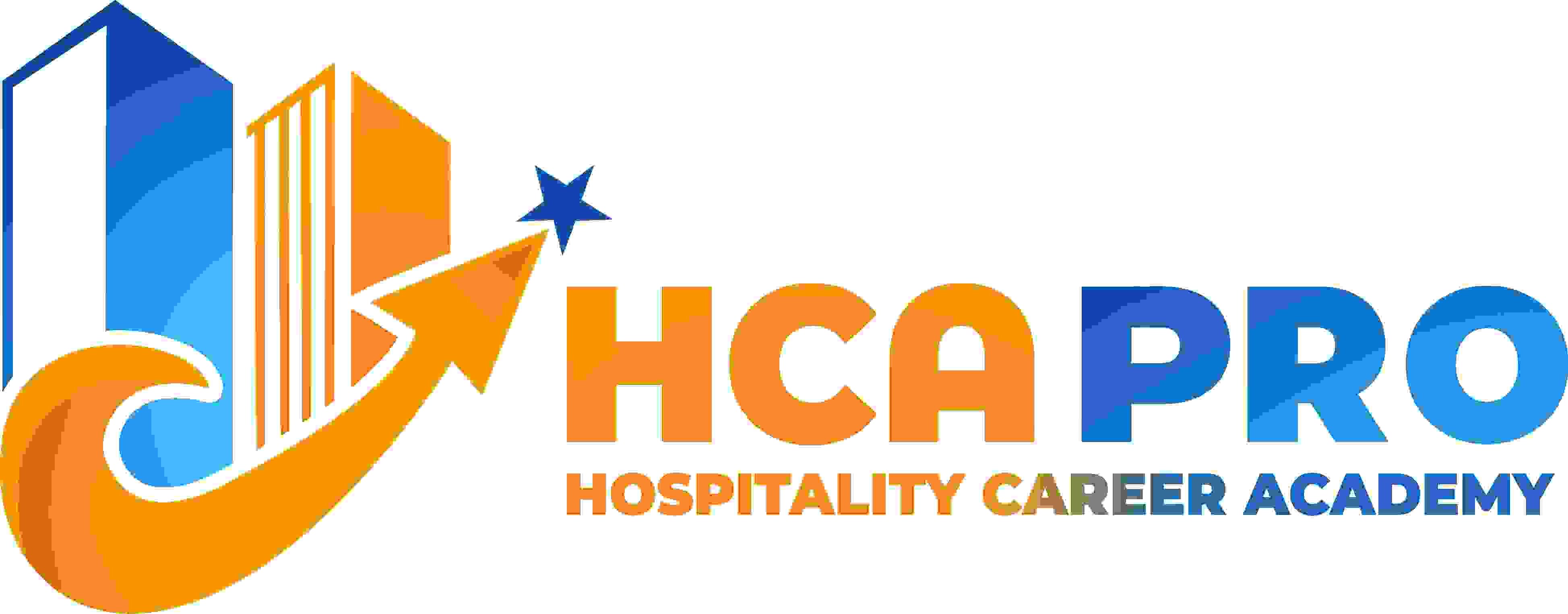
How to conduct a training needs analysis (with examples)
Before any training can take place in hotels, resorts, cruise ships, or other hospitality establishments, the needs must be identified to ensure that it meets the needs of the business. This type of analysis is popularly referred as a Training Needs Analysis (TNA).
The training needs analysis will be the determining tool in any HR professional's career. It helps you determine areas for improvement in your workforce. With this data collected, it will help you develop successful programs that will support your business growth. These programs are important in our present climate. In fact, according to McKinsey, training is essential in helping companies recover from COVID-19.
What is a Training Needs Analysis?
TNA Training Needs Analysis is the process by which a company identifies its employees' training and development needs in order for them to do their jobs effectively. It entails a thorough examination of the organization's training requirements at all levels.
TNA in hospitality industry
Good hospitality training specialist consultants and their trainers highly recommend a training needs analysis (TNA) before any training that they undertake. This is an essential first step. Training involves investment in time, money, and resources. Such an asset to address the actual needs and make a significant difference to the company's success can lead to complete utilization of resources and can also affect the degree of success of the training program. As with any investment, returns are expected from training in the form of improved performance, leading to business goals.
So how do we go about conducting a Training Needs Analysis (TNA)? Where do we begin? What are the needs? How can we plan? How to make it happen? What difference will it make?
How to Conduct a Training Needs Analysis (TNA):
Understanding the current situation
Conduct an internal evaluation of the current situation. This entails gathering information on how the company is currently operating, which can be obtained through a variety of means:
-
Feedback from Guests (Guest Comment Cards/Customer Satisfaction Surveys)
-
Mystery Shopper Discoveries "Complaint Log Books"
-
Interviews at the End
-
Employee Opinion Polls
-
Employee Evaluation Forms
-
Evaluations of Operations
-
Reports on Incidents
-
Workplace observations "Brand Standard Audits" Ability Tests
-
Discussions with individuals
-
Group Discussions
Determine the best possible outcome.
Next, determine what the desired outcome might be. This entails visualizing the desired future, which can be determined by reviewing:
-
The Vision and Mission of the Company
-
Company Goals and Strategies
-
Business and marketing strategies are translated into goals and objectives.
-
Requirements of Guests or Customers
-
Career Development Requirements:
-
Changes that are expected, such as new services, policies, or procedures
Analyze the GAP
A GAP analysis is carried out once information on the current and future situation has been gathered. This is the difference between the results of Steps 1 and 2 and can be expressed as:
Training Need = Desired Outcome - Current Performance.
It should be noted that training will not solve all performance issues. This is important to distinguish because the incorrect solution may result in the incorrect outcome. If there is a lack of knowledge, skills, or attitude, training can help. While knowledge and skills are more easily identified and corrected, attitudes can be improved over time through learning, monitoring, and consequences. Look for correlations and consistency in the final analysis. Examine the details and avoid taking the "forest for the trees."
Present the PLAN
With training budgets at their disposal, needs must be prioritized. External regulations such as health, hygiene, and safety, which are at the top of the list, require training to meet legal requirements. This is not negotiable and may have an impact on operating licenses. Consider what is immediately required to correct the situation, such as gaps in service and product standards delivery, changes in policies and procedures, the introduction of new services, and so on. List all regular training programs, such as orientation, soft skills training, and other supervisory development programs, that are provided by good employers. Finally, include any employee development activities that promote career advancement and growth within the organization.
All training requirements can then be documented in a "Training Plan" based on priorities. Each training requirement should be specified in the training plan:
Training plan requirements
-
What must be accomplished (the goal)?
-
Why is it critical (what will happen if it is not done)?
-
Who requires training (specific individuals or groups)?
-
When it is necessary (Timely training can lead to more effective results)
-
Where will it take place? (conducted in the house or externally)
-
How it will be assessed (desired changes back at the workplace)
Budgets should be allocated based on priority, and the plan should be presented in an easy-to-understand format.
Work on the schedule after communicating.Training needs assessment template
|
Name: |
Department: |
|
Position duties: |
|
|
Task |
How would you rate your knowledge? E excellent AB above average A average N needs improvement |
Would you like additional training? Y yes N no |
|
Communication |
||
|
Writing |
||
|
Listening |
||
|
Facilitating |
||
|
Interviewing |
||
|
Editing |
||
|
Coaching |
||
|
Interpersonal |
||
|
Human Relations |
||
|
Motivating |
||
|
Counseling |
||
|
Managing conflict |
||
|
Delegating |
||
|
Management & Leadership |
||
|
Coaching & Counseling |
||
|
Time Management |
||
|
Leadership |
||
|
Negotiating |
||
|
Problem Solving |
||
|
Financial |
|
|
|
Budgeting |
|
How to Train Yourself to Succeed in 5 Steps
Success is a result of chance - or, at the very least, years of hard work, right? If you believe this, you have most likely never heard of the success formula. It implies that success can be developed. You can chart your own professional path with a few simple techniques. Is it too good to be true? Then be on the lookout for
-
The right attitude
The first lesson sounds banal, but it’s the most important: Pay attention to your attitude. Successful executives are ambitious and do not doubt themselves. They have self-confidence and cannot be confused by failures or mistakes. Nor do they burden others with these things. On the contrary, failures and mistakes are regarded as necessary experiences in order to develop personally and professionally.
Develop your success by not taking mistakes personally. Instead, think about:
-
How else should I have handled the situation?
-
How can I avoid such mistakes in the future?
-
Establish measurable objectives.
Top executives establish measurable goals. They are focused on this goal and are not distracted. Executives divide extremely ambitious goals into partial and intermediate goals that are easier to achieve. Successful leaders are also decisive because they know what they're looking for.
How to Improve Your Success: Make a detailed note of:
-
What does success entail for you?
-
What you hope to accomplish in the short and long term
-
Why do you want to achieve these objectives?
Then, establish specific objectives. Define the measures you intend to use to achieve these objectives. Concentrate solely on actions that will bring you closer to your objectives.
-
Improve your charisma.
When a charismatic person enters a room, everything else around them becomes invisible, according to fashion designer Karl Lagerfeld. With their appearance, successful executives exude sovereignty, professionalism, and know-how.
Create success: Improve your charisma in three easy steps.
-
Learn about your own strengths to boost your confidence. Learn more about:
- What you are particularly good at
-
What are your greatest talents and strengths?
-
Improve your communication abilities by learning to:
-
Express yourself in the clearest and most appropriate manner possible.
-
Ask the appropriate questions at the appropriate time.
-
Allow others to speak and listen to them.
-
Improve your body language by doing the following:
-
Place your feet hip-width apart while standing.
-
Maintaining your composure
-
Develop your charisma by smiling.
-
Strengthen willpower
Important success factors are the motivation and the willpower to turn decisions into actions.
Find out what drives you with the following questions:
-
What did you enjoy during your childhood?
-
What activities give you a lot of satisfaction today?
-
Which topics are you particularly interested in?
-
How do you see your life?
Then, to strengthen your resolve, choose to concentrate on:
-
Specific objectives
-
The fundamentals
-
Values in your life
-
Build mental strength
The resilience of an executive to adversity is referred to as mental strength (resilience). According to a Bertelsmann Foundation study, there is a link between professional success and mental strength.
Executives with strong mental fortitude can use their mental fortitude to overcome adversity.
How to Increase Your Mental Strength:
-
Consider situations in which you have previously demonstrated mental toughness.
-
Prepare for the upcoming challenge.
-
Continue to remind yourself that you can do it.
-
Consider how you will complete the task successfully.
This is a thorough and detailed procedure. As a result, an increasing number of hospitality companies appear to outsource their training needs analysis (TNA) and full training to hospitality training specialist consultants, saving them time, money, and resources
